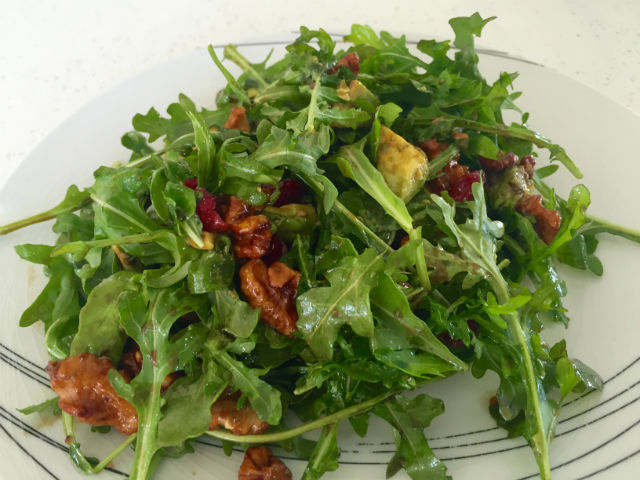
During the cold weather months, it can be so nice to enjoy comfort foods and warm, flavorsome meals with friends and family. Eating a creamy casserole with cheese and crusty white bread or warm apple pie is delicious and perfect for a winter’s evening, right?
Yes, it’s true, the odd splurge now and then won’t hurt you in the long run, but if we look as far back as the holiday season and consider all those back-to-back social gatherings that preceded the months of comfort food? Well, all that may not be so good on our waistline or our health. Rich, heavy meals and desserts are not only high in calories, but they also encourage the body to retain water due to the high sugar and salt levels. As emotionally comforting as these meals can be, they can leave us feeling heavy and bloated.
And when we consider that spring break and summer vacations are not all that far off, the thought of showing our bare legs in a (now) tight pair of shorts might not be as comforting as all those comfort foods were.

Don’t worry, though — if you feel like this describes you right now, there are things you can do to reset your body and your habits so spring and summer find you out in the world, feeling active, happy, confident, and healthy. Here are my six recommendations:
1. Drink Lots of Water
When we eat more, our bodies require more water to process and digest that food. For every gram of carbohydrates we eat, our body draws in approximately 2.7g of water in order store those carbs.1 So, if we eat 100g of carbohydrates in a big slice of apple pie and ice cream, then our bodies could also be adding on approximately 270g of water. And let’s not forget that a lot of comfort foods are high in salt, so our body also draws in as much water as possible to dilute the high sodium levels to maintain equilibrium.
But it is not just carbs and salt that require water. Eating lots of protein in dense meat dishes such as stews and casseroles also requires more water for the body to process since nitrate-based compounds resulting from the breakdown of proteins are filtered out through our kidneys as urea and water. Therefore, lots of water is required to filter and flush the broken-down proteins.

All this adds up to mean that if you don’t drink the fluids you need to properly process your food, then the body hangs on to what little fluid it has, leaving you feeling like a watery balloon. Additionally, a lack of water slows down the digestion process and can leave you feeling bloated, sluggish, and possibly constipated.
Aim to drink at least one third of your bodyweight in ounces. So, if you weigh 150lbs, then drink 50 ounces per day at a minimum (and, no, coffee and soda don’t count).
2. Drink Freshly Squeezed Vegetable Juice
While drinking all that water, it is also a good idea to have a freshly squeezed veggie juice to get a big dose of vitamins and minerals packed with antioxidants. Our winter splurges such as cured ham, waffles, and syrup may consist of lot of foods that are dense in calories but not necessarily dense in nutrients. So even though your bellies are full, your bodies may not be getting all the vitamins and minerals it needs for optimal health.
A great way to give your body a healthy boost is to consume freshly made veggie juices. To ensure your juice retains all the goodness, it is best to use a cold-press juicer that slowly crushes the juice out to retain as much nutrients as possible.

Here is a veggie juice from my 7 Day Meal Plan eBook.
3. Limit Fatty Meat and Dairy Products
As you try to reset your system, it is important to limit some foods that can slow digestion and further contribute to feeling heavy and bloated. For a lot of people, dairy contributes to stomach issues such as gas, bloating, aches, and pains, whether they are lactose intolerant or not. Full fat dairy can sit heavy in your stomach, as can fatty meats since fat takes a lot longer to process and digest than carbs or protein.
Try keeping foods that are high in fat to a minimum while you are trying to reset your system and habits.
4. Avoid Breads and Processed Carbs
Another food to avoid is bread and products made with white flour. Once again, our body requires almost 3g of water to store carbs. Not to mention, products made with processed flour such as breads, pastries, bagels, crackers and biscuits pretty much end up straight on the hips.
And that’s not just a fitness magazine headline. Here’s the thing: white flour has been stripped of fiber and other essential nutrients, which gives it a high glycemic index value. The glycemic index value is the rate at which carbs are broken down into glucose in your bloodstream. The high glycemic index value of refined white flour products sends your insulin levels through the roof and causes these foods to be stored right away, along with those 3 extra grams of water per gram and the inflammation these types of food can cause, as well.

Roasted squash is far healthier (and more flavorful) than bread.
The inflammatory aspect of these products can lead to bloating, gas, and intestinal discomfort regardless if you are gluten intolerant or not. To cut a long story short, eating a big bagel may leave you feeling watery and bloated, which is not great if you are trying to clean out your system.
Opt for vegetable-based carbs that are lighter on the stomach and contain more nutrients. Sweet potato is my favorite, but I also love butternut squash and pumpkin. All three contain carotenoids and antioxidants that support our health instead of detracting from it.
5. Pile Your Plate with Greens
Eat salads and lightly sauteed kale and spinach. Fill your tummy with volume that contain little calories but lots of nutrients and water. Just like the freshly squeezed vegetable juices, a plate piled high with rocket, arugula, and other green leafy veggies will give you an energy boost because of all the wonderful vitamins, minerals, and antioxidants. These leafy greens also lower inflammation in your body and may be a nice counter to the inflammatory apple pie, cheesy casseroles, and bacon with waffles.

One of my favorite salads, also available in my 7 Day Meal Plan eBook.
6. Move Your Body
Exercise will get your circulation going and help to flush out those months of holiday feasts and winter comfort foods. I know that after eating a heavy meal all you really want to do is sleep, but that is because the blood needs to be concentrated in your stomach and intestines to digest all that food. But after you take that nap, make sure you then go enjoy a rigorous uphill walk, hit the gym for a kickboxing class, or lift some weights. Doing a workout or two will boost your energy and help burn off the excess food intake.
The best thing about a post-splurge workout are the feel-good endorphins that put you on a high.
So, Are You Ready for Spring Break?
Enjoying rich, comforting meals during the winter is fabulous and fun. And there’s nothing “wrong” with enjoying those foods now and then, but if you are feeling heavy, bloated, and sluggish, then the steps I’ve outlined should help push you to a fresh start in plenty of time for spring and summer.
For those going on a spring break trip or summer adventure who want to feel good, have lot of energy, and feel comfortable in those shorts, try these tips as soon as possible. Start by drinking loads of water, eating lots of greens, limiting dairy and fattier meats, and cutting out products made with refined white flour. This will give you a kick start to spring and a good head start for the summer season, too.
Reference:
1. NASM Essentials of Personal Fitness Training, Jones & Bartlett Learning, p482



































